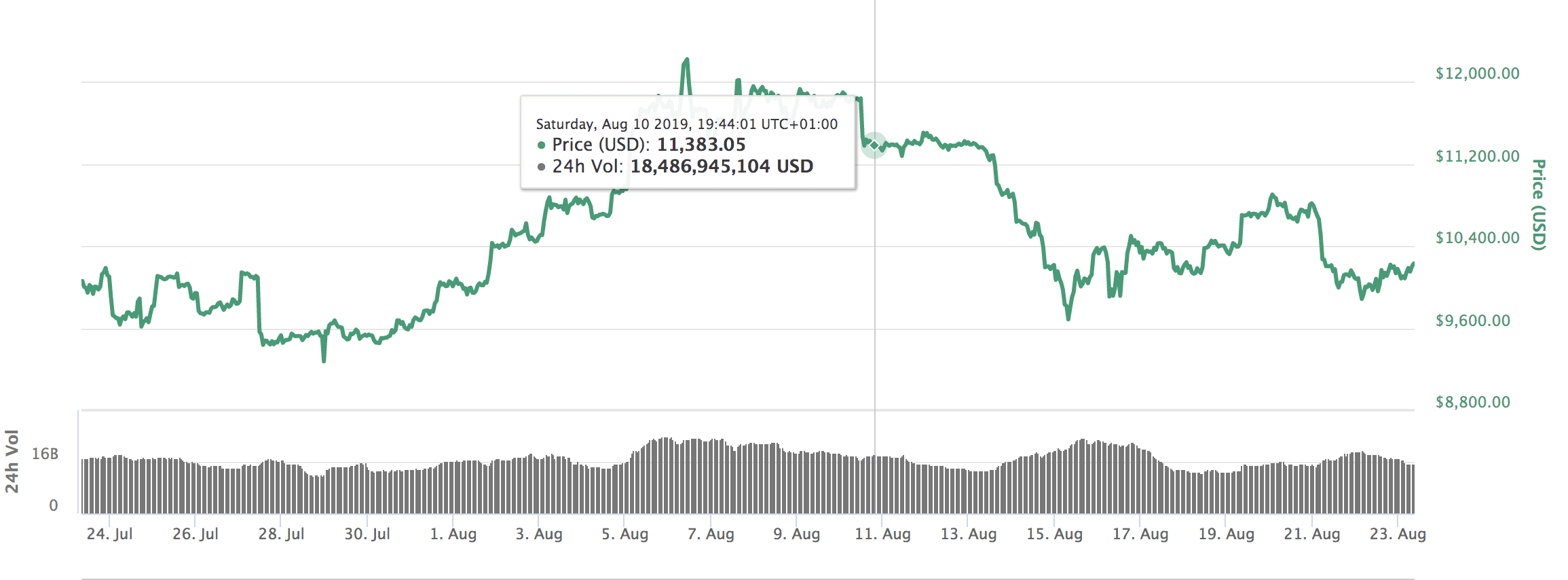According to CoinMarketCap, Bitcoin started the month of August trading below $10,000; hitting $9,983.08 per coin at 05:44 UTC on August 1. It then recovered, surpassing the $10,000 mark, reaching $10,036.70 later that day. The cryptocurrency reached its highest value so far this month on August 6 at 10:44 UTC, when it climbed to $12,222.69. Bitcoin dropped to its lowest point of the month so far on August 15 at 07:44 UTC, hovering at $9,685.83 At the time of writing, the world’s most famous cryptocurrency was trading at around $10,230.29 a coin. Bitcoin is often dubbed “digital gold,” and pitched as an alternative to the real thing. Earlier this year, a Hard Fork report showed that the two assets performed almost identically for about a month. Gold’s relatively poor performance is potentially linked to a lack of clarity on the US Federal Reserves’ outlook for interest rate cuts. This, some commentators say, may have triggered investors to cash in some gains ahead of chairman Jerome Powell’s upcoming speech. Powell is expected to deliver much-needed clarity on monetary policy, Reuters says. Spot gold – the price at which gold may be purchased and sold right now, as opposed to a date in the future – was down 0.3 percent to $1,494.60 per ounce as of 04:00 GMT. Overall, gold declined in value by almost 1.3 percent so far this week, seemingly on track for its biggest weekly percentage decline since March 29. Bitcoin, on the other hand, is trading at over $6,000 more than it was on March 29, when the cryptocurrency’s price hovered just above the $4,000 mark. Both Bitcoin and gold have proved helpful to investors. They have both, at some points in their lives, been leveraged as speculative investments or safe-haven assets. One clear difference between the two is that gold is tangible, while Bitcoin isn’t. Similarly, Bitcoin roams wild and free, but gold trading is widely regulated. They say comparisons are odious and while that’s largely true, I think it’s fair to say that Bitcoin is winning, at least for now. Disclaimer: This article is for educational purposes only, and should not be considered investment advice.
